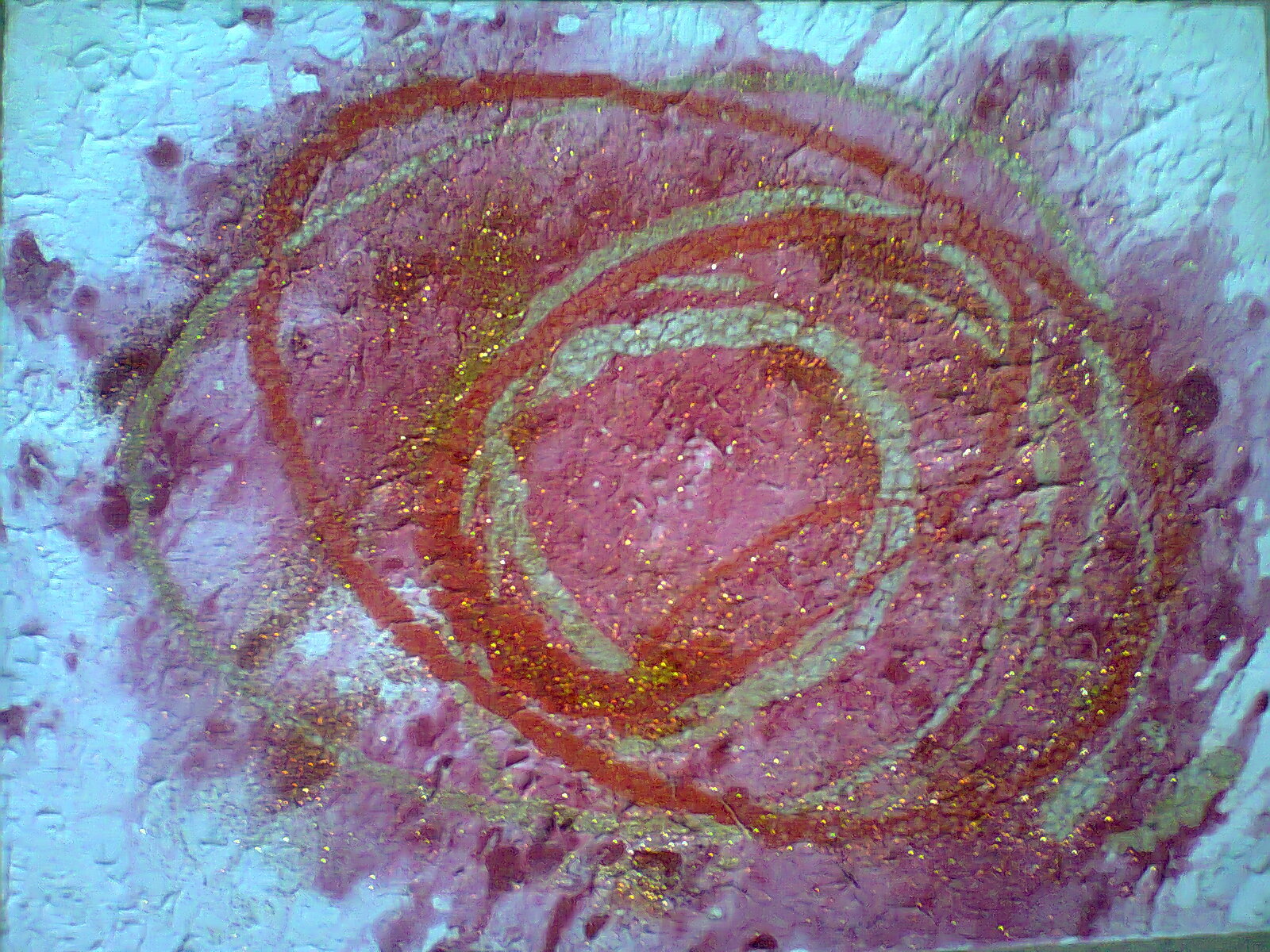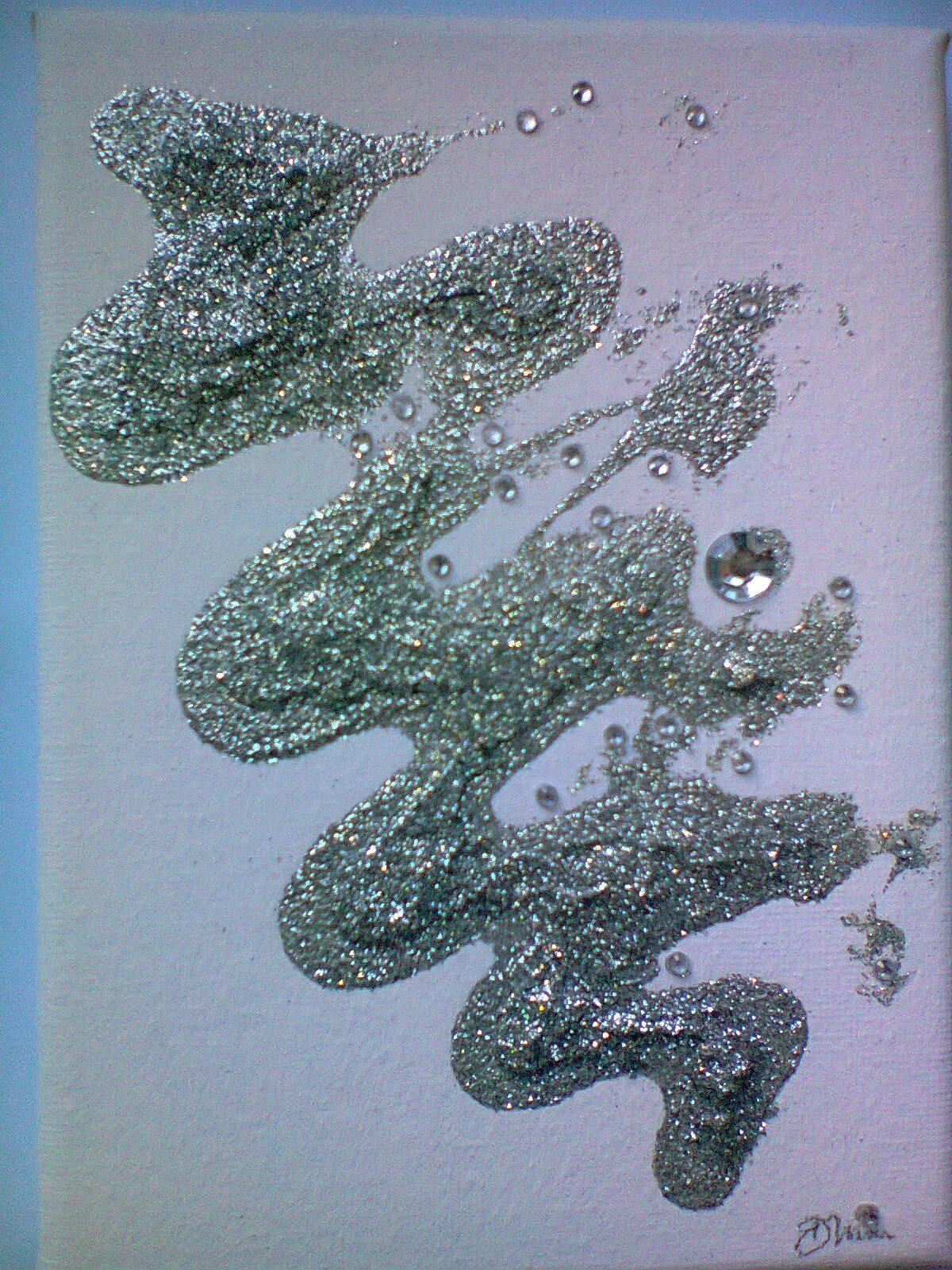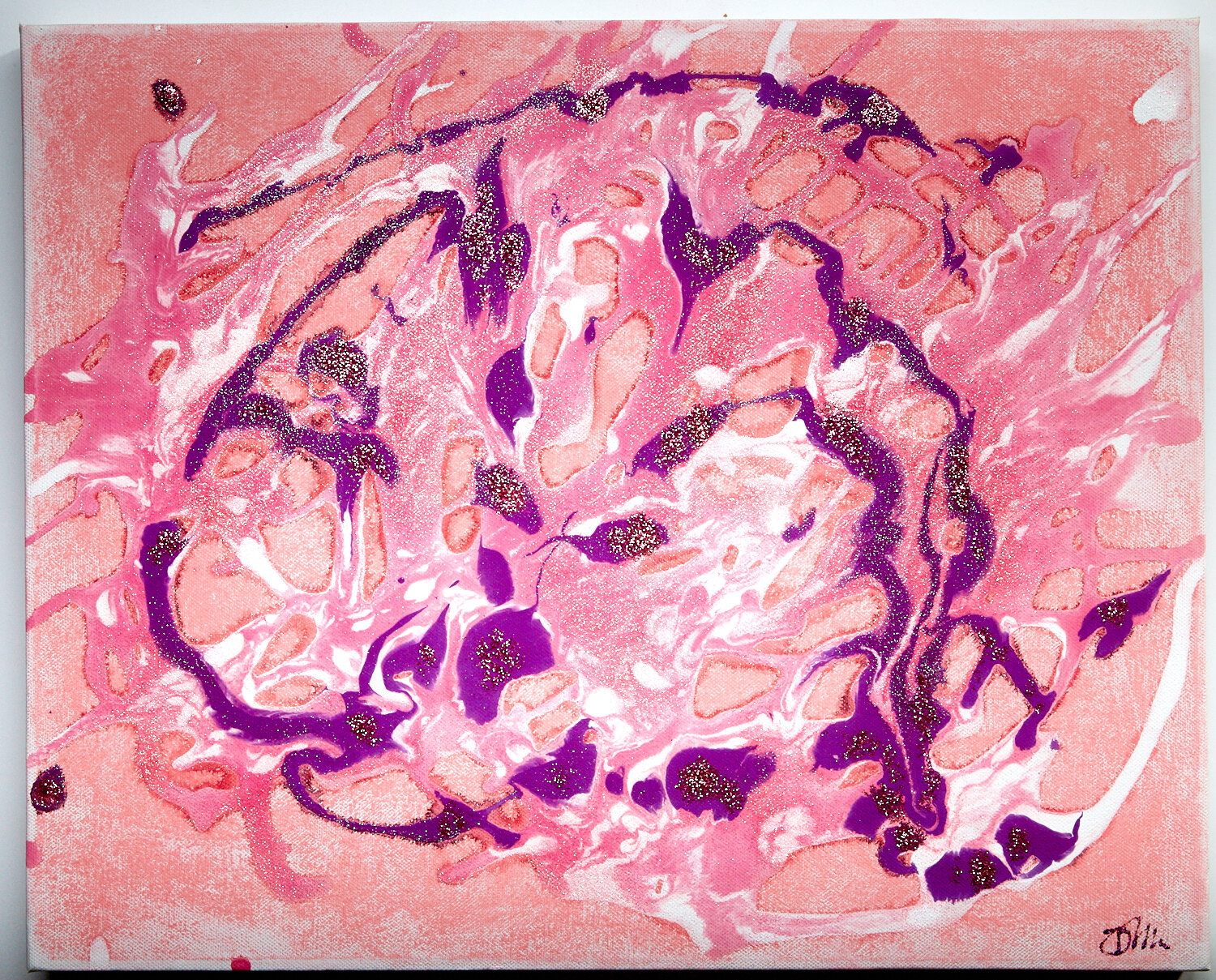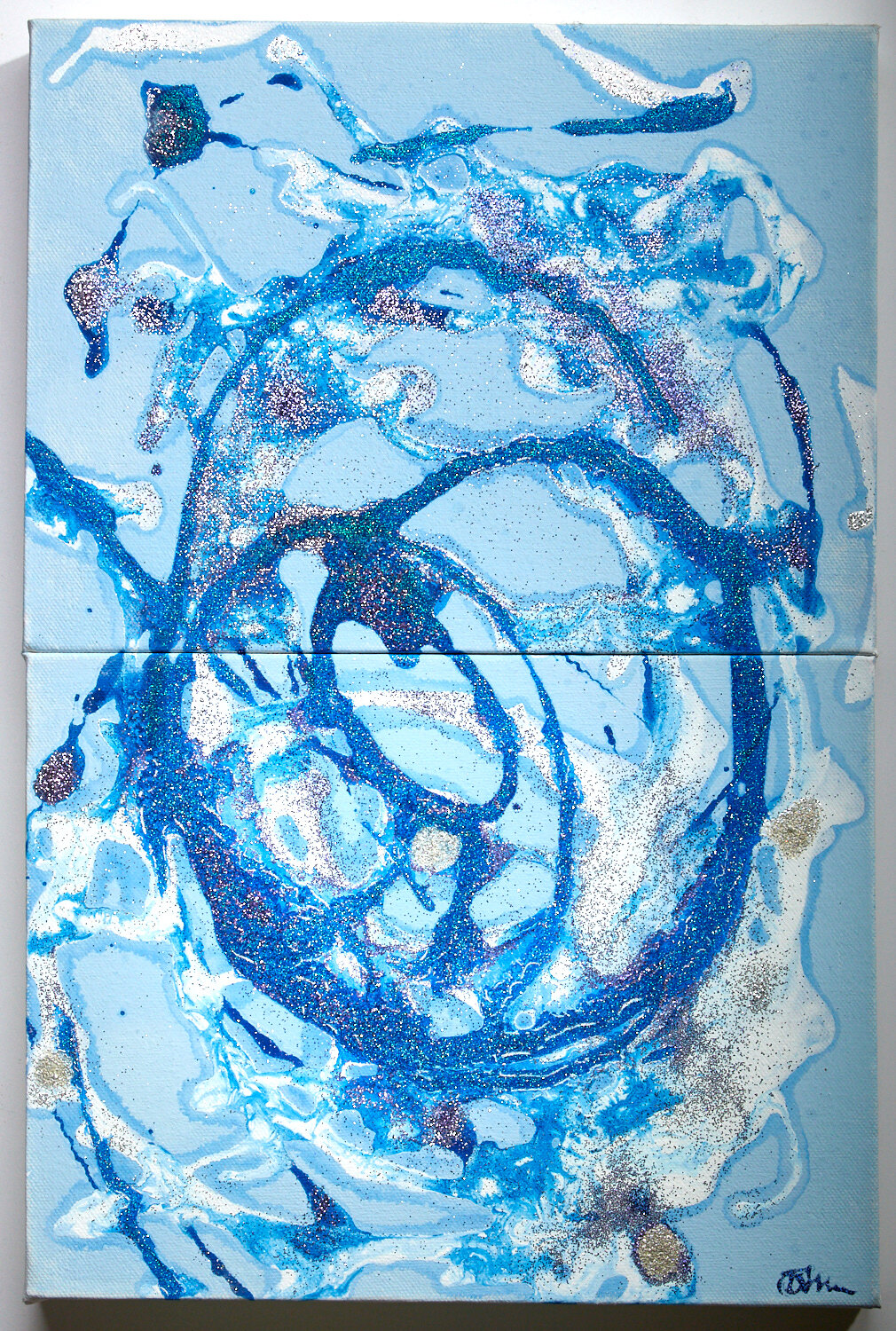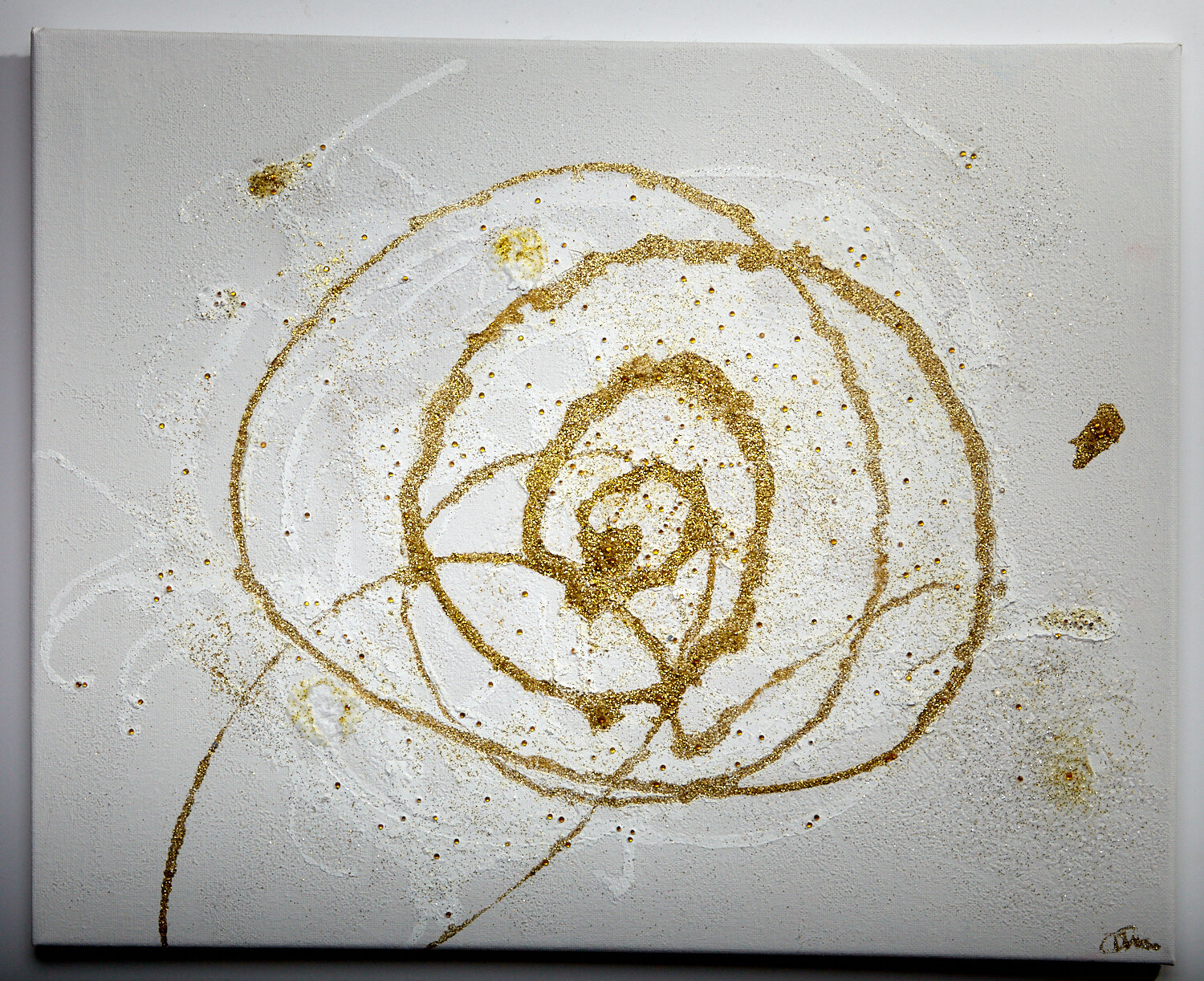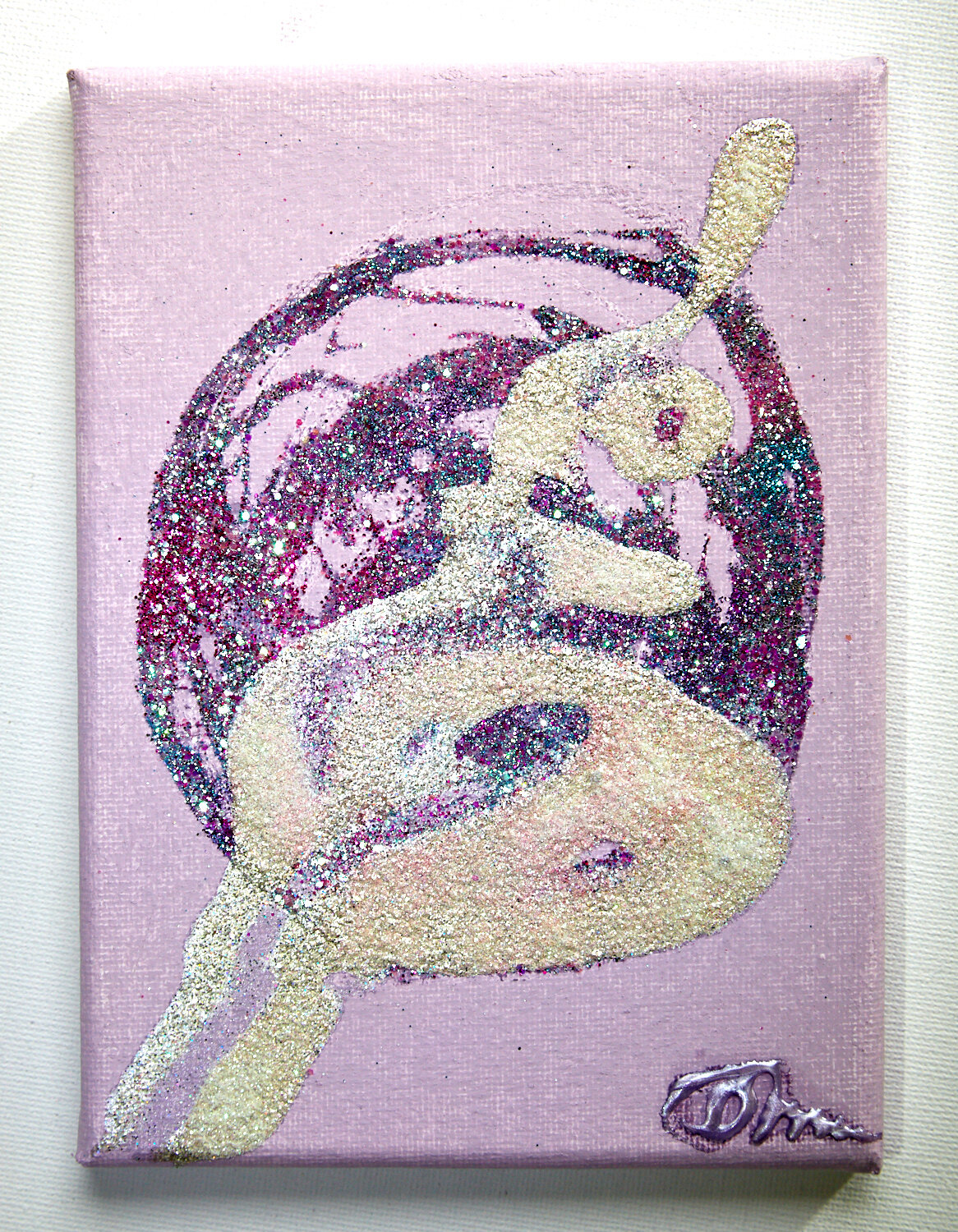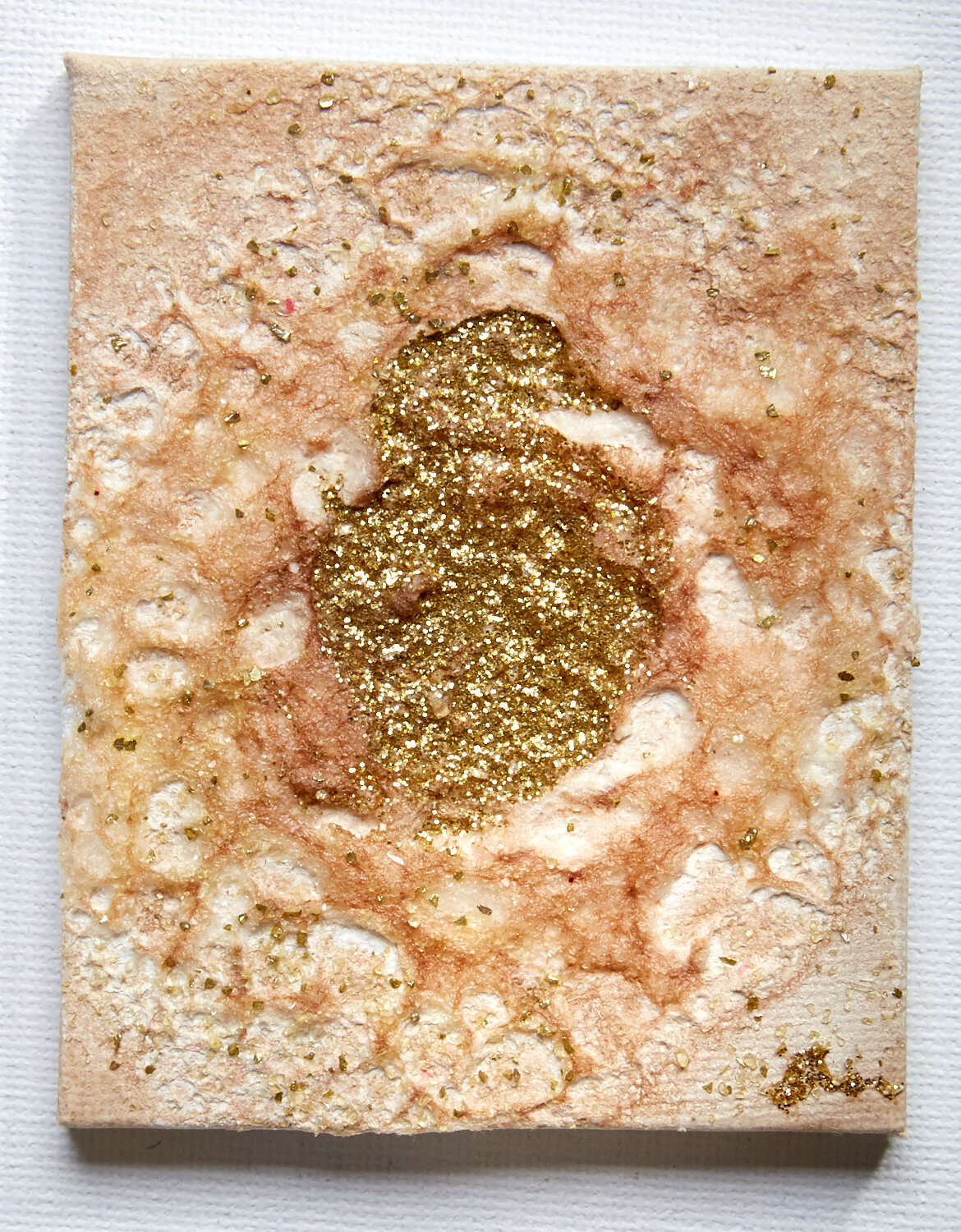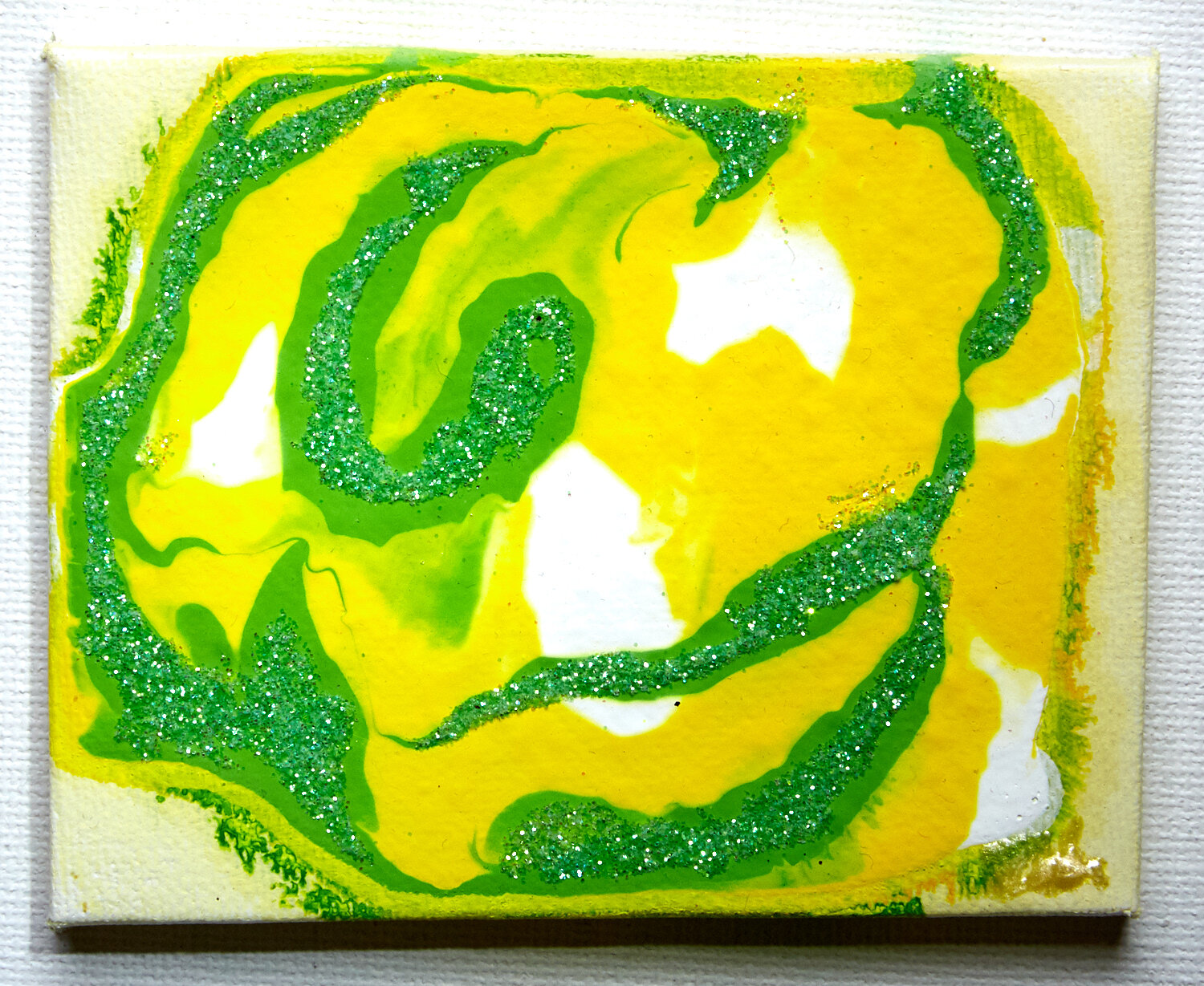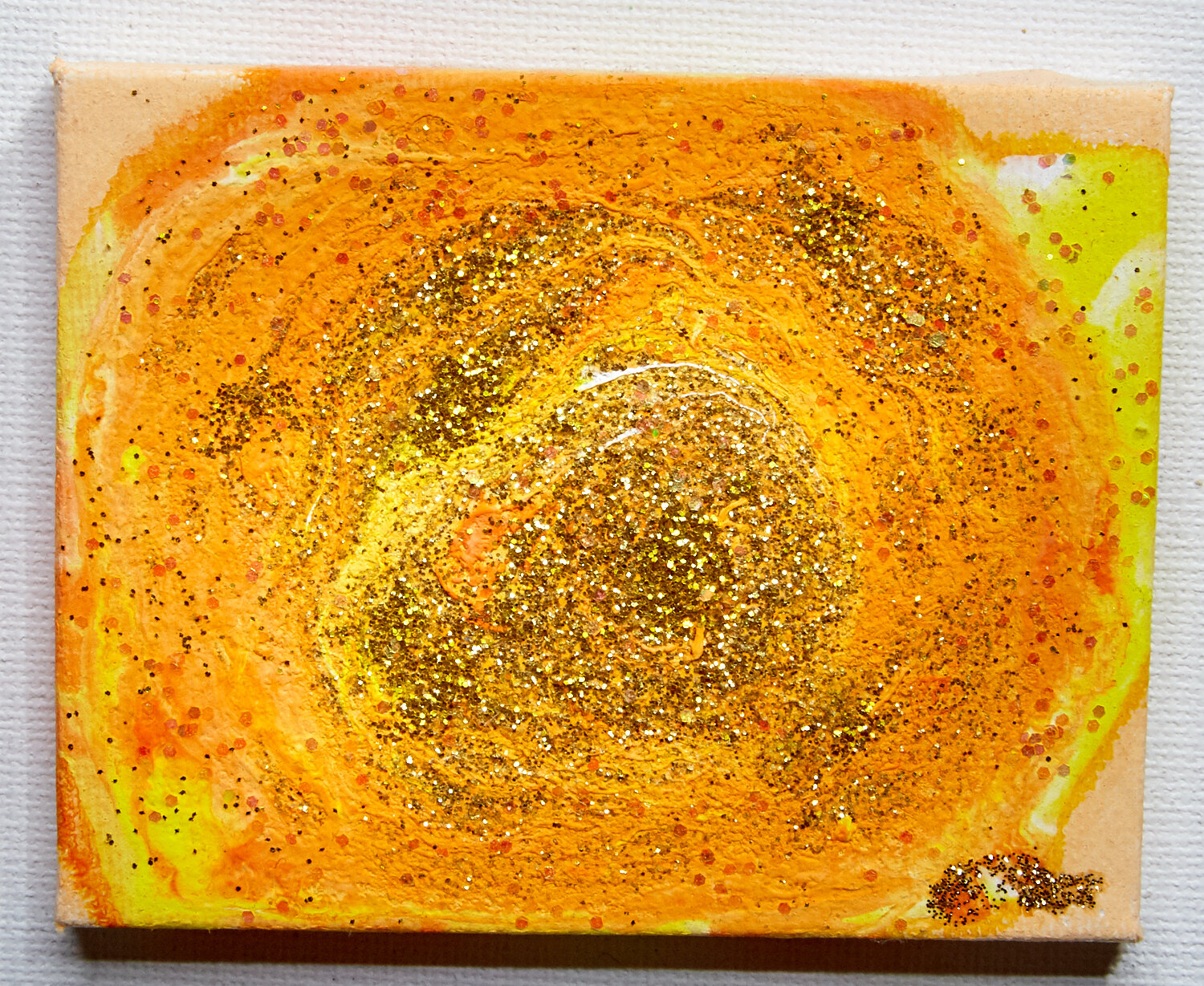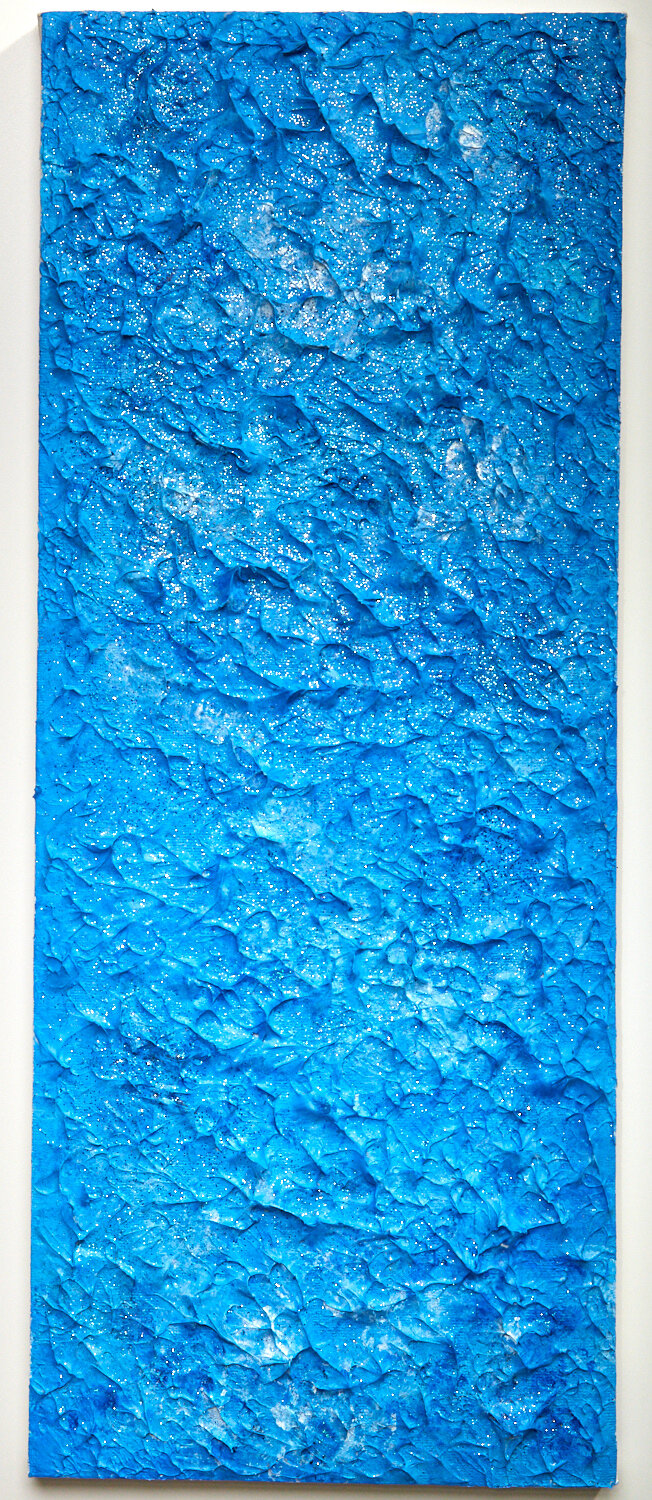Interview with Doris Minter
I am German and have lived and worked in Germany, Switzerland, Bermuda, London and Bath. The UK has been my home for 27 years and it is here that I started in the arts about 4 years ago and have since exhibited in Bath and at Brick Lane Gallery, London.
Can you pinpoint the moment you decided you wanted to become an artist?
That is a difficult question. I think everyone is an artist in something. It also depends if you are just painting for yourself or for the public, for fun or for money, which ultimately involves different pressures and stress levels. I started for fun and for my own purpose 4 years ago after my experience in an art workshop (see question 3), but this eventually led to being asked to sell my work and make it more public. I did so when I was ready.
Where do you get your inspiration from?
I get my inspiration from my faith and the beauty of creation. But also matters of the mind, e.g. peace, joy, well-being and wholeness. I am fascinated by neuroscience, which has proven that a brain (e.g. a mind) can physically heal and reconstruct given the right therapy, for example art therapy. This is not contradictory, but complementary. As a Christian, I find my faith anchors me in a busy world.
Tell us a little about your artistic background. What were your first influences to be creative and become a serious artist?
This is quite a story: I have occasionally done some art work in the past on canvas, paper and glassblowing and was always quite amazed about the outcome, but then life took over with its busy-ness. I work with children in my spare time and during an art workshop to further my work with children with mental health issues something "clicked" and something was set free in me. The result was my piece "The Princess", which totally astonished me as I found it beautiful and so did many others. First I was very private and secretive about it, hardly showing my works to anybody, but then friends became interested and one friend invited me to exhibit in her house gallery in Bath. From then on I had my first big commission, joined a local artists group and after that had my exhibition in London.
When do you know that an artwork is finished?
I would say by intuition. And I am glad when I pass that point, because I can be quite a perfectionist, which would mean I could be working on one painting forever. Now I can stand back as objectively as possible and say; "if I do one more thing it would spoil the painting". I then sign it, dot the "i" of my last name with a gemstone and don't do anything more to it afterwards.
Can you describe what an average working day for you is like? Do you work on many creatures at once or one at a time?
Well, I start with breakfast and a quiet time, a time of meditation to centre myself in peace. I still have got a "daytime job", so I work on art projects and commissions either in the evenings or on weekends. Occasionally, I take a day off from work to paint. It is important for me to be well rested and in an unhurried state of mind to do artistic work. I try and work on one painting at a time for space reasons, but also in order to be able to fully concentrate on it. But occasionally I end up working on two. I also often have ideas for a "next" painting while I am working on one project.
What makes your art different than others?
What makes my art different is myself, as I am pouring my own individuality which I express in my paintings. For me, this includes my background in faith, but also techniques of using light, materials and colours which help the image live. Some of the work is quite fragile because of the materials and the multiple dimensionality, I guess that makes it quite special. I guess everyone's art is different and it is so exciting that we can celebrate our diversity in the community of artists.
In your opinion, what role does the artist have in society? What do you hope that others will gain from viewing your art?
I can't speak for other artists, but it is my opinion that artists should be like watchmen on the walls of society, seeing what is happening and working for the good and warning against the bad. On the other hand, an artist's work should also be to enlighten, strengthen, encourage and comfort. For me, my message is that there is always hope, no matter how bleak the situation looks like - hence the light aspects of my work, resembling life ... to never give up!! I hope my paintings will touch and uplift people in mind and spirit. I hope they will look at the paintings and say " This makes me really happy" - which is exactly what another artist said about my paintings on the private viewing evening at the Brick Lane Gallery. Art has been proven to be a very powerful tool to bring healing and wholeness, and both the artist and the viewer can benefit from it.
What’s the most important element in your artwork?
Structure, light reflective elements, two- to three- dimensionalism. I also often work with gemstones, one painting had over 900. I work from the subconscious and never quite know what I am doing until it all becomes clear on canvas. The ultimate element for me, however is brightness and beauty.
What has been the most exciting moment in your art career so far?
My first commission and my first exhibition at the prestigious Brick Lane Gallery in London.
Do you have any upcoming events or exhibitions we should know about?
Yes, I am hoping to attend the Bear Flat Artist Trail 2020 in Bath, where I will be displaying my work and accepting commissions. I might possibly take part in the Fira d'Art Internacional in Barcelona May 2020 and have recently been contacted by a gallery in the centre of Rome to exhibit my paintings. I can also be contacted outside of these events by e-mail: dorisminter@hotmail.com


